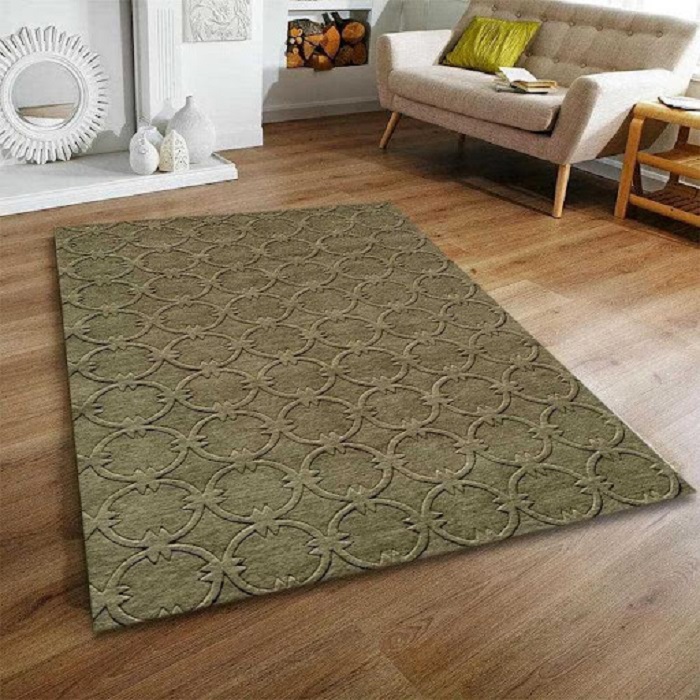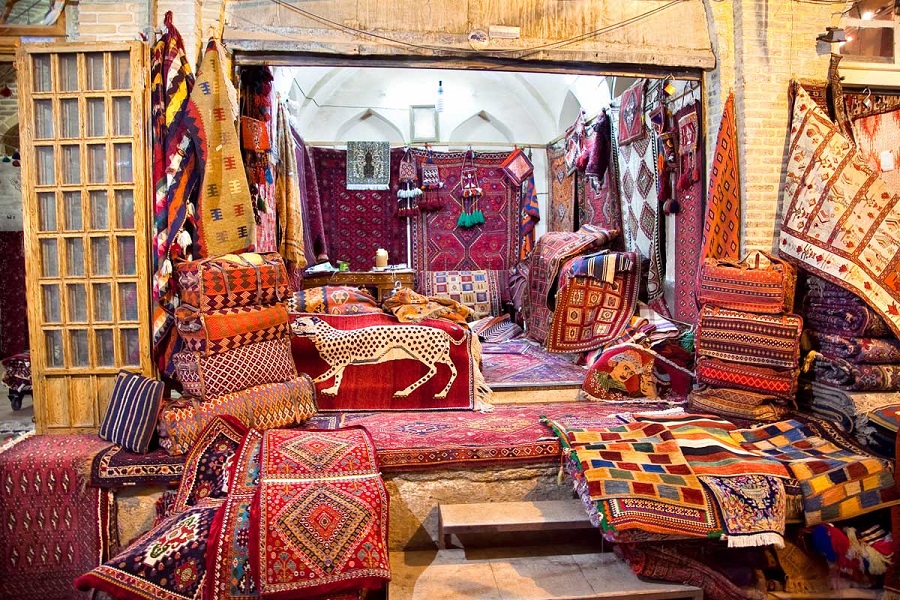Gabbeh, traditionally known as Gaba, Gabbeh, or khersak, is a Persian hand woven rug woven in the Zagros mountain tribes of Persia. The tribe women of Soth-Western Iran weave the rugs. The word Gabbeh means coarse, unfinished, or unclipped. Each rug is knitted with a slightly different style by different families. Traditionally these rugs were used by the tribes for their use, and they mostly used them as sleeping mats and blankets. The rug is crafted on a horizontal loom. Some of Gabbeh’s rugs are thickly piled, while others have piled on both sides. Some rugs are woven with an undying material, and some are dyed with pure raw materials. These rugs have simple patterns and designs. Original designs are now. Some of them include a light way or design.
What is Gabbeh
Gabbeh means coarse is a traditional Persian rug woven by the tribes of Persia and Iran. It is woven by Qashqai or Luri weavers in Iran. Pure raw materials weave these rugs. Moreover, these are simple design rugs. Slight imperfection is common in Gabbeh as these are handwoven on a loom. Most of them are weaved with a thick pile, and some have both-sided piles. Originally the rug served the purpose of mats and throws. These rugs have a simple design with the tree of life or a camel in the desert or sunset or an ocean. Most of the rugs are beige tone undyed, and some are jewel-toned. Different families weave each rug and craft their symbols and stories in the rug. Due to the exquisite designs and alluring patterns, these rugs became popular worldwide.

Groups of Gabbeh Rugs
Gabbeh is traditional antique-style rugs woven by the mountain tribes of Iran and Persia. These are the heritage collections. Also, The tribe women get the skill and art from their ancestors. These rugs are simple-designed thick piled rugs. Some are earthy-toned undyed, and some are bright colors. Gabbeh is classified into two groups.
-
Nomad Rugs
Traditional or nomad rugs are weaved by using animal hair or cotton threads. These are woven by the tribe women of the Qashqai and Luri tribes. Moreover, These rugs are hand-knotted with a unique style. Knot density and thickness of piles vary from one rug to another. The tribal designs are the type of nomad rugs. Many tribal rugs have narrow ends. They show all over warp and weft substitution patterns. Also, The most famous Gabbeh is Qashqai, with bright colors and all-over geometric designs with minimal vegetal motifs.
-
Modern Rugs
These are commercial purpose rugs weaved by the South-West tribes of Iran. Modern rugs are thickly piled and knitted by modern patterns. Some of the rugs are simple designs, and some have rich patterns. Modern rugs are wool piled with a thick texture. The modern Gabbeh rugs have mostly all-over geometrical designs. In the West, a Gabbeh is a rug woven with a coarse wool quality and has an all-over design of simple geometric shapes arranged haphazardly. These rugs are also known as jajim.
Gabbeh Rug Categories
Gabbeh rugs have many varieties. Each one varies in pattern, color, and style. Besides, The pile thickness also changes with the rug type. Initially, the rugs are categorized into five different types according to the tribe and design.
-
Basic Gabbeh
Basic Gabbeh is designed with fewer knots counts and a denser pile. Its design is simple and basic, with minimal details. Moreover, The patterns are bold geometrical shapes with tribal symbols.
-
Kashkuli Gabbeh
These rugs have short, soft piles and thicker knots. These area rugs are simple patterns and bright in colors. This type of design is made for nomads.
-
Khorasan Gabbeh
This rug is also known as Shahsavan, which has more color and detail than the Basic Gabbeh. It has a thick pile and soft texture. This type of rug is commonly found in northwest regions of Iran, especially in Khorassan.
-
Shahsavan Gabbeh
These are the most artistic of all rugs. It is made with highly skilled techniques, more color, and more detail than Khorasan Gabbeh. These rugs have some motifs that have flowers or birds in their centers, surrounded by vines. This fabric has beautiful woven borders decorated with natural elements such as flowers, trees, and mountain scenery. The colors are vibrant and lively.
-
Luribaft Gabbeh
These rugs are short and soft piles with a sheen finish. Luribaft rugs are made of high-quality wool. The designs are rich and sophisticated, and the color is bright.
-
Gabbeh Sumak
These are flat weave rugs. Sumak rugs are pile-less. Artisans weave colorful designs on the foundation of the rug. The base design makes it a unique rug of its kind.
-
Amalehbaft Gabbeh
These are short piles and colorful rugs with a basic and simple pattern.
The Popularity of Gabbeh Rugs
Gabbeh rugs are popular due to their pure natural materials. From material to dye, everything is made from raw materials. The dye is obtained from plant insects. Most of the Gabbeh rugs are made of wool. They got fame due to their combination of antique and contemporary designs. The natural materials make it a durable but expensive rug. These rugs are available from medium to small because they are weaved on portable loom tribes from their ancestors.
Facts of Gabbeh Rugs
The women of the Persian tribes weave these rugs. They have no professional tool or skill but the knowledge and loom they got from their ancestors, making them prone to slight imperfections. It is weaved on a horizontal loom of a size easy to carry as the nomad tribes’ move from one place to another. Gabbeh rugs are made of pure wool obtained from the sheep they own. Also, the dye used for coloring threads and yarns is obtained from local plants and flowers. It is an all-natural rug with no synthetic dye or thread.
Weaning of the Rug
The rug is weaved on a horizontal loom with wool or cotton threads and yarns. The cut of the rug is rough, and the piles are mostly long. Artisans use the original best quality wool in their creations. Some of the rugs are passed from generation to generation. The knot density is thick, the knot count is fewer per square inch, and the piles are long in these rugs. Some of the tribes craft the design in the base of the rug. It is weaved, bypassing wool or cotton weft and warping to create a dense knot and thick texture.
Features of the Rug
Gabbeh is a thick pile rug with a density of ¾ inch. It has fewer knots compared to other rugs. It has simple geometric patterns with bold and bright colors. Gabbeh has an asymmetric design, and most are weaved with the symbols and folk stories of the tribe.
Summing Up, Gabbeh is a traditional denser pile rug with a unique design and features. The bright colors of the rug make it the center of attention. It is an antique-style rug mostly carried as family heirlooms. RugKnots is the best place to invest in a rug for your home. With their huge variety of rugs you will find the perfect piece for your home or office.
